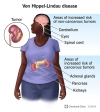
25th Anniversary of Nature Genetics! To celebrate,
he editors have selected some past papers which are free to read for a limited time.
Rett syndrome is caused by mutations in X-linked MECP2, encoding methyl-CpG-binding protein 2
This landmark study found that an epigenetic mechanism explained at least some cases of Rett syndrome, providing a link between the epigenome and genome in the pathogenesis of a neurodevelopmental disorder. The impact that this finding has had on the field is reflected in its nearly 2,600 citations to date.
A high-resolution recombination map of the human genome
This first high-resolution linkage map of the human genome, based on 5,136 microsatellite markers in 869 individuals from 146 Icelandic families, represented an order-of-magnitude improvement over the previous state of the art, and spurred further refinement of the draft human genome sequence. As reflected in its >1,200 citations, this study has facilitated numerous advances in human genetics and evolution research.Detection of large-scale variation in the human genome
This landmark paper, with >1,900 citations, found that kilobase-scale copy number variation is common and widespread in the human genome. The study, along with a contemporary publication in Science that also reported large-scale copy number variation, led to the development of a key resource for the community, the Genome Variation Database (now the Database of Genomic Variants).A rice quantitative trait locus for salt tolerance encodes a sodium transporter
This work reported a gene variant that improves salt tolerance in crop rice, a significant advance in the field reflected in its 485 citations to date. This was the first paper published in Nature Genetics to report the identification of a gene responsible for a key agricultural trait directly in the crop species of interest, rather than a model organism.Principal components analysis corrects for stratification in genome-wide association studies
The method introduced in this paper, EIGENSTRAT, represents a key methodological advance for genome-wide association studies. This paper, with more than 3,800 citations, not only addressed a significant challenge in the field, but enabled further advances both in methodology and understanding of the genetic basis of human diseases and complex traits.Distinct and predictive chromatin signatures of transcriptional promoters and enhancers in the human genome
This study identified the first chromatin signatures that could be used to distinguish enhancers from promoters in the human genome, enabling future research into the regulatory architecture of the genome. Cited over 1,400 times, this paper represents one of the major milestones in epigenomics research.Convergent adaptation of human lactase persistence in Africa and Europe
This study, cited 642 times, answered the long-standing question of why the genetic variant linked to lactase persistence in Europeans was not associated with lactose tolerance in African populations. They identified new variants in these populations that account for variation in the trait, and provided a striking example of convergent evolution in humans that is accessible and relevant to the public.Common loss-of-function variants of the epidermal barrier protein filaggrin are a major predisposing factor for atopic dermatitis
This study, cited over 1,400 times, identified variants in FLG accounting for a large proportion of atopic dermatitis cases in Europeans and a subset of asthma that co-occurs with atopic dermatitis. These findings indicated for the first time that genes with function in the skin, rather than immune-related genes, could contribute to asthma development.
http://www.nature.com/content/NatureGenetics_25th_Anniversary/index.html?WT.mc_id=FBK_NG_1704_Anniversary25_Portfolio





